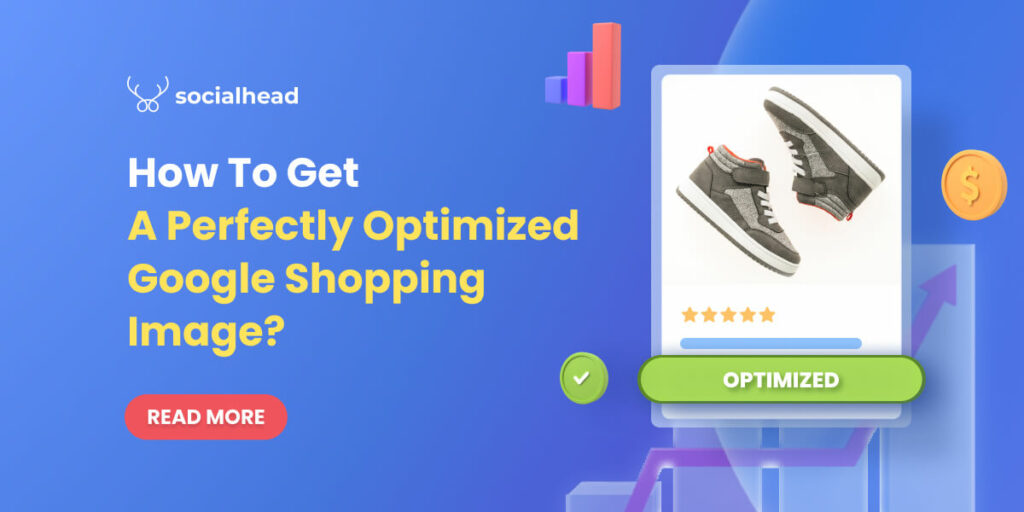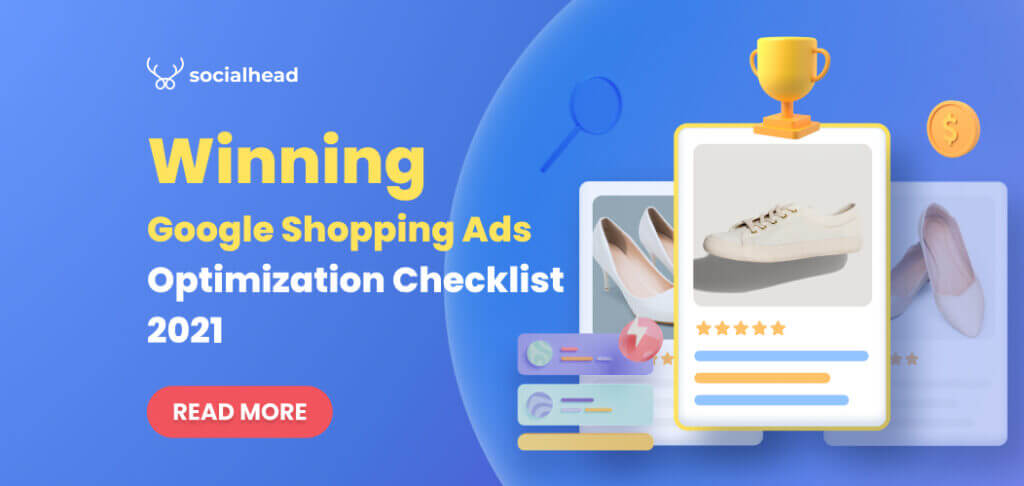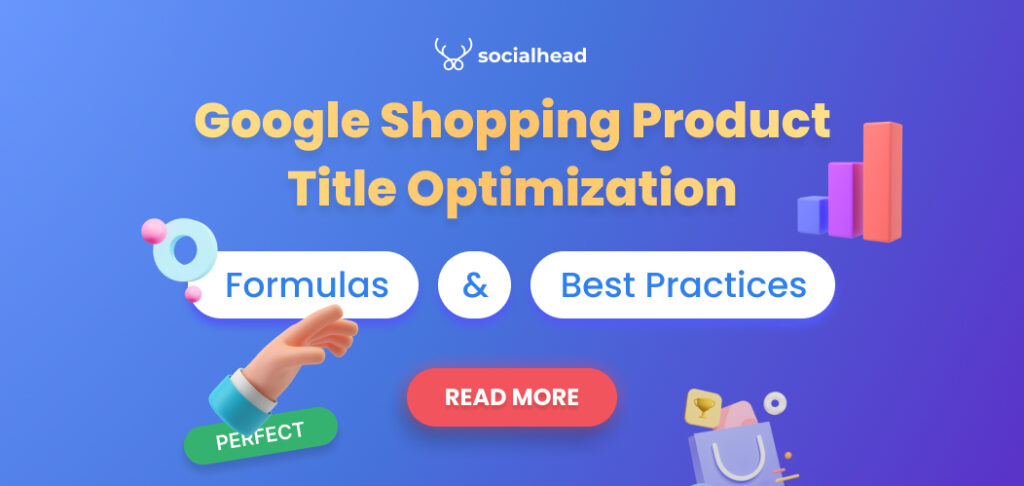Even though every business wants to, not many of them know how to improve Google Search Ranking for brands.
The role that social media activity plays in determining your website’s search ranking on Google is debated back and forth by marketers. In 2010, Google said that social signals don’t affect Google search rankings. Then, a few months later, they said it does affect it. In 2014 Google’s Matt Cutts said in a video that it doesn’t affect it.
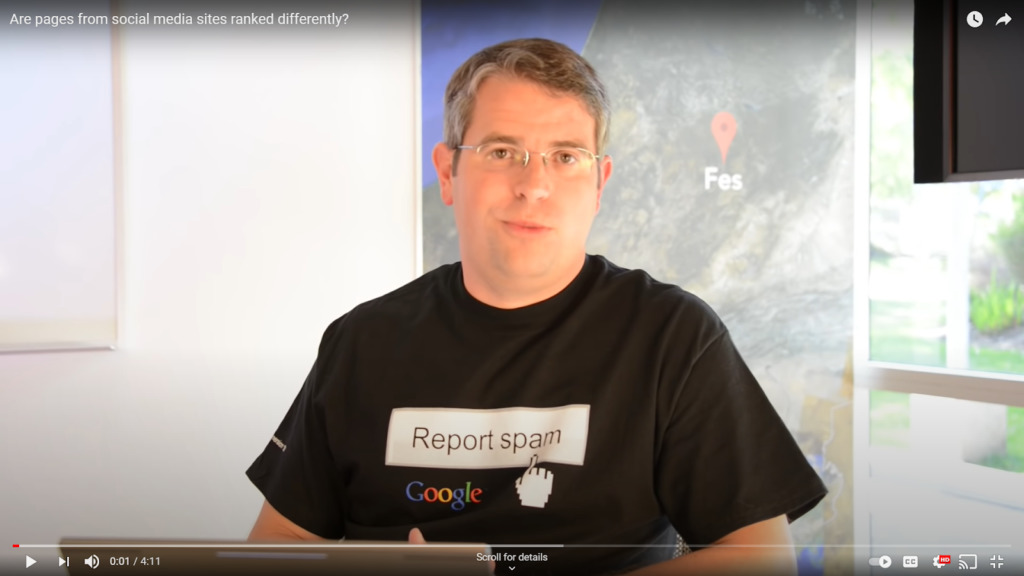
Google informed that social signals don’t affect Google search ranks (2014)
This back-and-forth has upset and confused marketers.
And the question remains: Is your Google search ranking affected by social media? Research suggests that it is.
Social media is built for sharing, which means viral content on these platforms will be seen by lots of people. The increased traffic will improve your ranking on search engines. But there’s a lot more to it than that.
In fact, the question merchants and marketers keep asking is completely wrong. It’s not about how social media affects your website ranking on Google – it’s about how discoverable your brand is on social media platforms themselves.

Does social media really do something to your Google search ranking?
Rethinking SEO to include social media for higher Google Search Ranking
Social media platforms are now titan search engines in and of themselves. For example, Twitter logs 2.1 billion search queries per day. You’re losing out if you’re not capitalizing on this new approach to search.
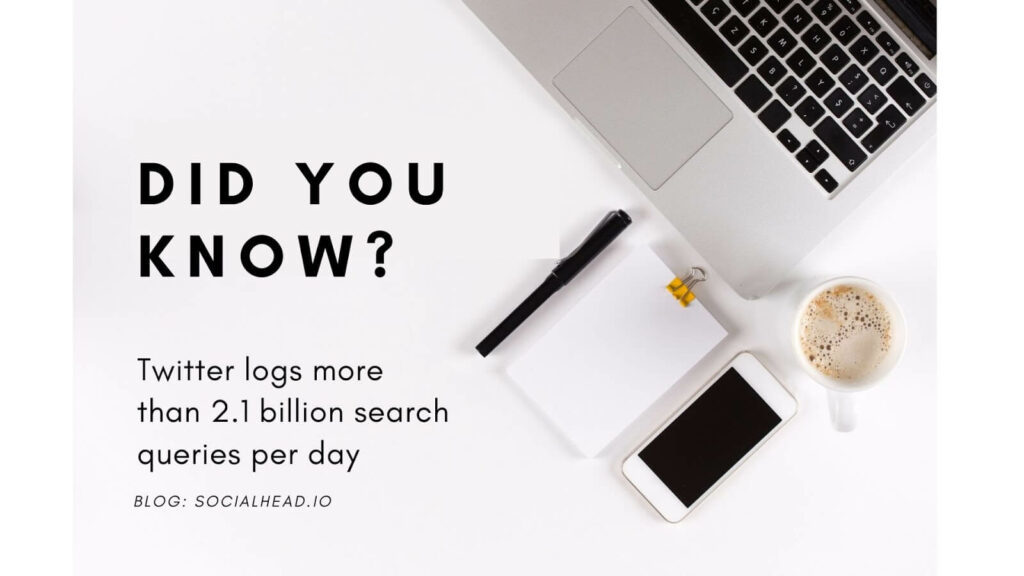
Twitter stats in 2014
Brands often miss how crucial social media is because they only measure referral traffic to their eCommerce store and ignore conversions that take place on social media platforms themselves.
But a whopping 70% of consumers search for products on Facebook and Twitter, and a further 30% say they would buy on these social media platforms.
The launch of Facebook Shops and Instagram Shops means the potential to use social media as a driving force for sales is greater than ever.
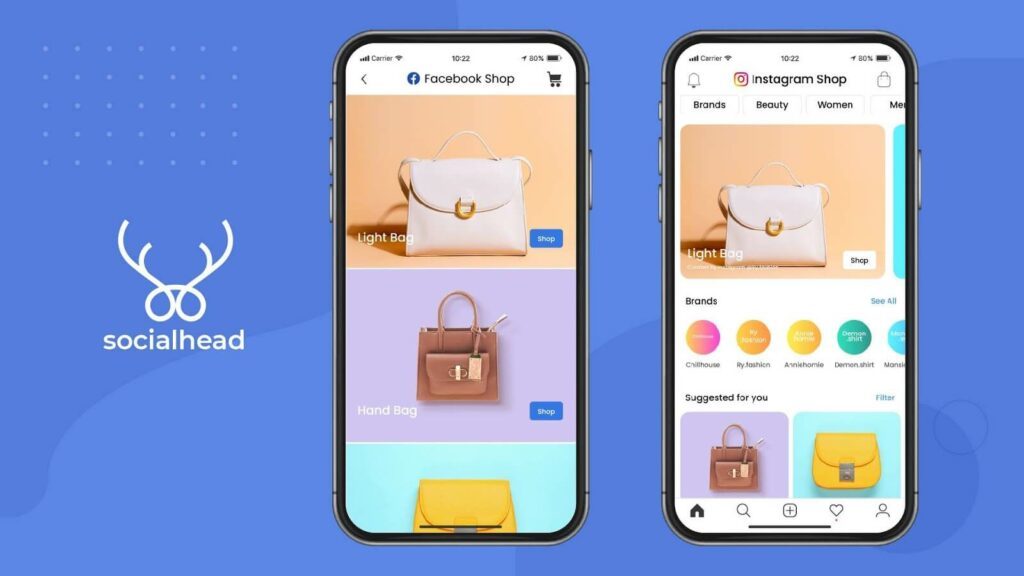
Facebook and Instagram have launched Shop features.
Product and brand discoverability on social media platforms already counts for a lot, but it’s going to become much more important in 2021 and beyond.
Furthermore, your brand’s social media profiles are indexed on Google and oftentimes they’ll show up on the top page of results. This means you need to optimize your profiles with keywords for SERPs.
It’s time to rethink SEO to include how discoverable your brand is on Facebook, Twitter, Instagram, YouTube, and other social media platforms, as well as how discoverable your social media profiles are on search engines.

SEO to your contents for more discoverable on social media platforms
How to improve Google search ranking for brands with social media
The same SEO rules apply to social media if you want your website to rank: produce valuable content that uses relevant keywords, backlinks, and so forth. While Google says that social signals such as likes, shares, and follows don’t affect SERP rankings, having more people view the content on your website likely will.
But forget about Google for a minute. They’re just players in this game.
We’re going to discuss how you can improve your brand’s Google search ranking on social media platforms itself.
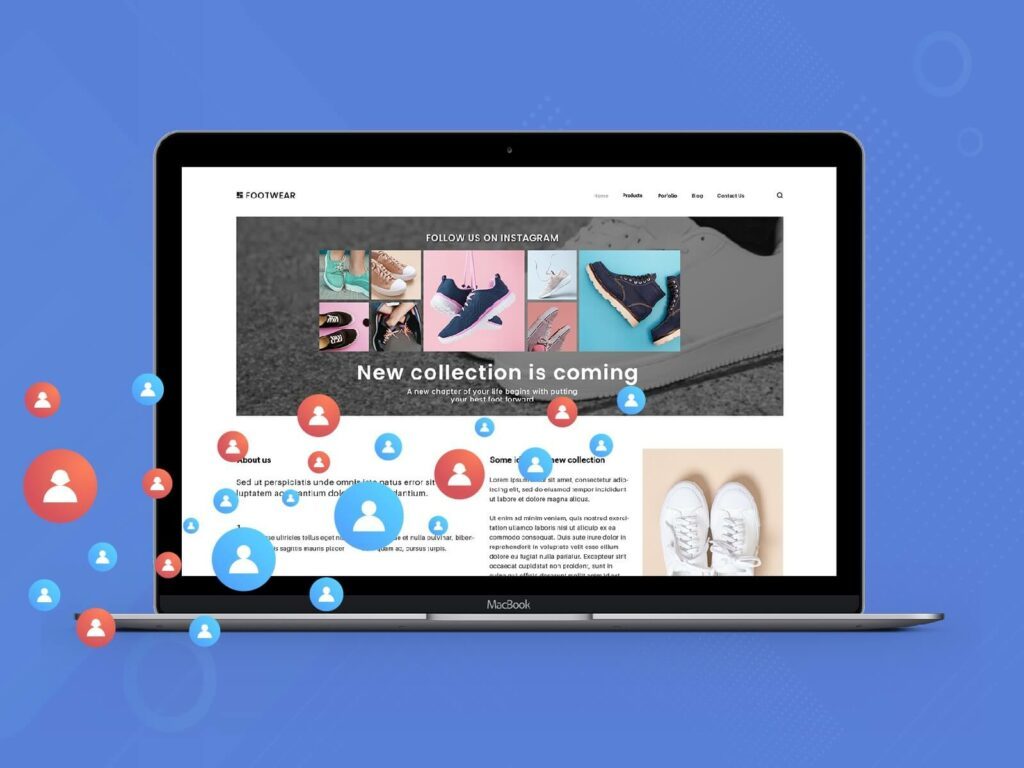
Do social signals influence SEO in 2021?
After all, billions of people use social media every day to consume content, find products, follow and engage with brands, and, ultimately, get influenced.
I’d argue this is a lot more important than just appearing on a search engine. I’d argue this is where you should be focusing your time, energy, and marketing budget.
So, here’s how you can improve your brand’s Google search ranking on social media to drive up traffic, social signals, and conversions.
Optimize your social media profiles
You need to treat your social media profiles like your eCommerce website. First, optimize them with keywords to increase the chances of them ranking on Google. You can do this on your About page, your posts, your bio, your product listings, and elsewhere.
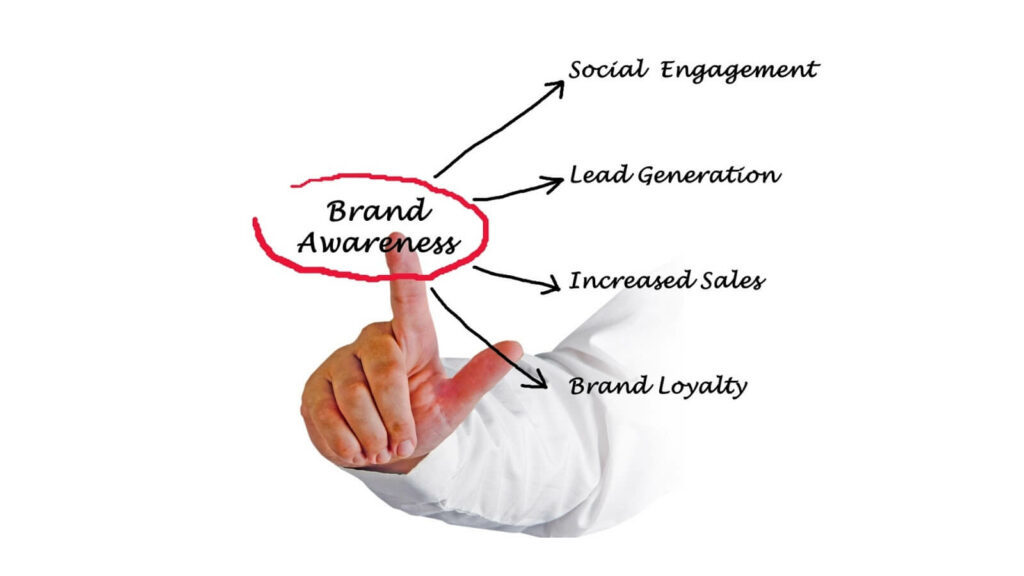
Give your social media profile a makeover
Next, consider how your brand’s pages will become more discoverable on each platform. One overarching theme here is to post regularly about hot topics and to drive up engagement on your page.
An important thing to note is that fake followers won’t make your profiles more discoverable or improve your brands’ Google search ranking because they don’t engage with your content.
Make your official page identifiable
It’s not uncommon for several pages to pop up when someone searches for a brand on Facebook or Twitter. You need to make sure that your brand’s page is clearly identifiable and that any related pages are clearly labeled for their purpose.
✔ Getting the blue tick on Twitter and Facebook to indicate a verified profile is essential if you want to scale your brand on social media.

Identify your brands on social media platforms to get customers’ trusts
Know which social media platforms to use – and how to use them
Knowing which platforms to focus on is as important as knowing how to use them to your advantage. Facebook is an all-round platform, but YouTube and Pinterest have more targeted audiences.
- Pinterest users are 81% female. High-income households are twice as likely to use it.
- YouTube is used by 71% of males and 61% of females in the US.
- Instagram is the preferred platform for influencer marketing.
- Twitter logs 2.1 billion search queries every day.
- Bing was responsible for 33% of searches in the US in 2018.
Knowing what kind of audience is using different social media platforms can help you to decide which ones your brand should be prioritizing.
I could – and will – write a separate article on how to use each social media platform to your advantage, but for now, let’s just go over the basic principles that they all abide by.
- Sharing is caring. Viral content means more visibility and more followers.
- You can’t have engagement without impressions.
- Post content regularly.
- Keep a consistent tone and voice to make your content more easily recognizable.
- Paid promotions bring in more results than organic ones.
- Post content that resonates with your target audience.
That last one is important. Sure, your viral cat video might be seen by 50 million people, but none of them are looking to buy your hand-made crockery when watching it, so it’s not valuable. Post content must be relevant to your brand and your target audience.
Automate as much as possible
You should also automate as much of the process as possible. Managing content delivery over three different social media networks is time-consuming and morale-biting. Use Socialpublish to plan content weeks in advance and auto-schedule publishing. The free tool allows you to manage your Facebook, Instagram, and Twitter accounts under one umbrella.
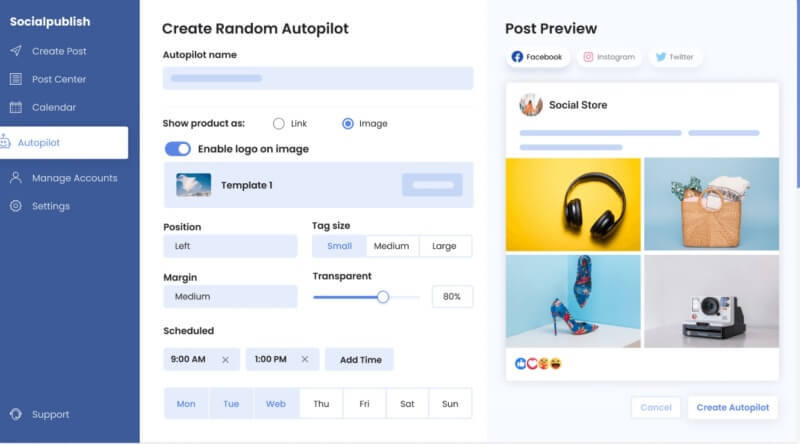
Socialpublish is a free and easy tool to create and schedule content on social media.
Optimize product feeds for better discoverability on Google search ranking
The more products appear on Google search or other social media search engines, the better chance it is to improve Google search ranking for your brands.
To make your product more visible on search engines, you need to optimize your product feeds first. There are 10 different ways to optimize a product feed.
All you need now is a tool to support you. Use Socialshop – One of the best Shopify apps for Google and Facebook product feeds. This app will enable you to sync and optimize your product feeds for better discoverability and visibility on search engines thereby improving your brand’s Google search ranking.
Use social media analytics to see what works
Blind-firing content into the dark might work here and there, but it’s not a sustainable strategy. You need to know how many people see your content, what percentage of them engage with it, who they are, and how many of them are buying from you.

Analytic tools are now free and easy-to-use
This means using analytics tools. Fortunately, social media platforms have built-in Insights tools that are free and easy-to-use. They don’t give as much data as Google Analytics would, but they show you enough to be able to make necessary tweaks to your content.
Content is king, but it’s data that places the crown.
Use Google Analytics to measure social referrals
You can see how many referrals your eCommerce website gets from different social media platforms by using Google Analytics. Check out how to set up Google Analytics (GA) to your eCommerce store in this YouTube video.
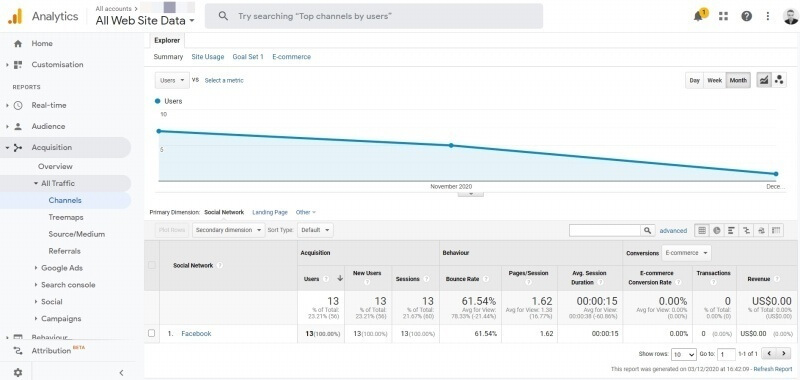
My portfolio’s epic 13 social referrals can be measured using Google Analytics.
Here’s how to measure social referrals once GA is set up.
- Open it up.
- Go to Acquisition in the left panel.
- Click Social in the drop-down menu.
- Choose Referrals.
- Click on a social media platform in the list to explore more.
Here you can see who came to your website from social media and which platforms are bringing in how much traffic.
Click on a social media platform in the list to see which shared URLs brought in traffic, as well as how many sessions and pageviews there were from that URL, and how long the average session lasted.
This information can help you to see the customer journey from social media to checkout. You can see which platform brings in the most sales and revenue.
This allows you to optimize your social media strategy for each platform and prioritize high-converting platforms.
Assume social signals will affect SERP rankings
Google says social signals don’t affect SERP rankings, but research suggests they do. On top of that, the rules of SEO are always changing, and how Google search ranking websites is never officially published.
Assume that social signals will affect your rank on social media. Also, consider that your social profiles are indexed on Google and Bing and do rank on search result pages!
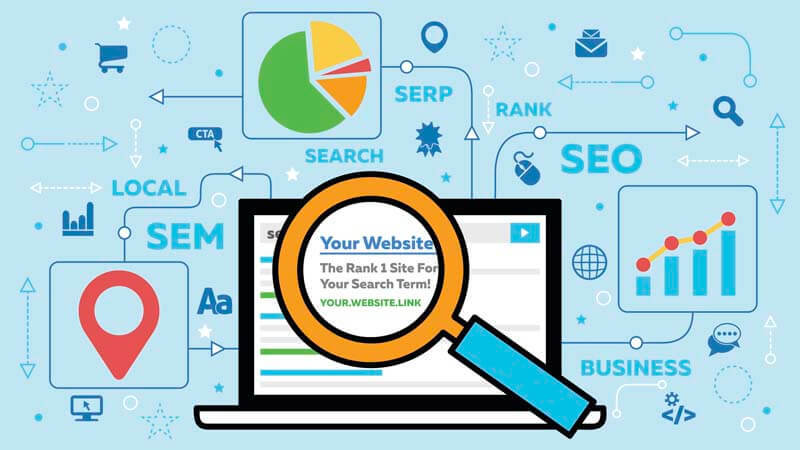
Drive engagements can somehow affect your search rank on social media
Driving up likes, shares, comments, follows, and other forms of engagement will make your brand more visible and increase conversions. Just because some marketers say that this doesn’t affect your Google search ranking, that does not mean you shouldn’t be trying to get more social signals.
It isn’t all about search engines anymore. Social media platforms are arguably more relevant to brand discoverability, and crucially, they allow people to follow your brand and receive regular doses of content from you.
Social media is a win for small businesses. Treat these platforms with as much importance as you treat Google, if not more!
Google crawls social media pages
Google still crawls and indexes some social media pages, meaning they appear in Google search results just like any other webpage.
So, the takeaway here is that you might as well assume social signals (which drive up engagement and views) will make your page’s Google search ranking higher on Google.
Focus on quality of posts, not quantity to attain superior Google Search Ranking
Why is it that the foundation rule of modern SEO so often goes out the window when it comes to social media? Focus on the quality of your posts and you’ll rank higher.
This should be obvious, but it’s so easy to make quick posts on Facebook and Twitter that people sort of forget to put any effort in. They think they can just post product listings and people will flock to follow them.
No.
Bad.
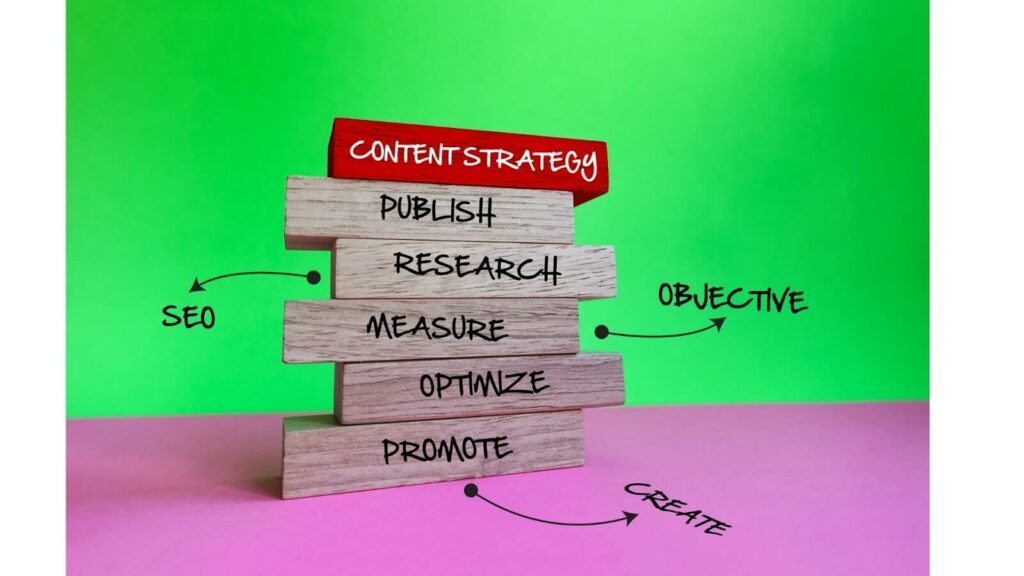
Quality first-in content if you want a higher Google search ranking
Treat your social media posts like you’d treat your website’s blog. You wouldn’t want it to be full of rubbish, would you?
Creating quality content on your blog and sharing it on social media is an effective way to boost your Google search ranking on search engines. It’ll also make people more likely to follow you on social media.
Even one backlink to your site – which is a form of doing SEO – can have a significant effect on your Google search ranking, so sharing great content to thousands of people is, naturally, a good idea.
Give them something they’ll enjoy
Using your social media pages to build engagement through content, competitions, videos, Q&As, and other creative pursuits is going to make people actually enjoy following your brand’s page.
Most brands’ social media pages are crap. All they do is post product listings. Now, with Facebook Shops launching, you’ll have a whole storefront to do just that. This means you should focus on building fun and engaging content on your social media pages.
All of this is ultimately going to improve Google search ranking for your brands. If people follow you, read your posts, visit your website, and buy things from you, then you can reasonably assume you’ll rank higher on search engines.
It just makes sense.
 socialhead
socialhead

